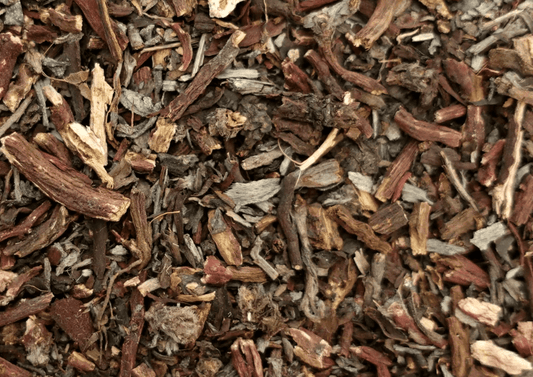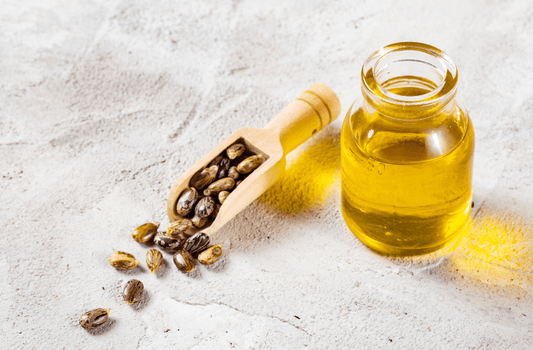Oatmeal soap is an absolute classic! Oatmeal has a reputation for being able to soothe the itching and irritation caused by eczema and psoriasis.
It's no surprise then that oatmeal soap is very popular with people suffering from these skin problems.
Adding oatmeal to a homemade soap is a great way to cleanse your skin, and potentially soothe any sensitive skin. We're using finely ground oatmeal for soothing, and larger oats for gentle exfoliation.
We're using some jumbo oats for added exfoliation, so the finished soap is exfoliating, nourishing and cleansing. You can also get creative with our range of shaped soap moulds! What more could you want?
Hot process soap safety
The hot process method of soap making can seem intimidating at first. Actually, it is more forgiving, and a little easier than cold process soap making.
The main thing to be mindful of is temperature. You want the melted oils to be below 65C, and the lye solution below 25C. Make sure your slow cooker is on low heat when you're cooking the soap, and you won't go far wrong.
Read on for our oatmeal hot process soap recipe!
Equipment:
- 3.5L slow cooker
- Gloves
- Goggles
- Digital weighing scales
- 2x 1L plastic jugs
- Silicone spatula
- Digital thermometer
- Stick blender
- Soap mould or DIY alternative
Ingredients:
- Olive oil 320g | 351ml
- Unrefined cocoa butter 240g
- Babassu oil 240g
- Argan oil 40g
- Water 264g
- Sodium hydroxide 118g
- Ground oats 10g
- Oats 12g
- Lemon sherbet mica powder 10g
- Lavender essential oil 10g | 11ml
- Lemon essential oil 10g | 12ml
- Ylang ylang essential oil 2g | 3ml
- Geranium essential oil 2g | 3ml
Makes 9-10 bars of soap
Takes 1 hour making time and 4-6 weeks curing time
This recipe uses a 5% superfat of argan oil to make your homemade soap wonderfully moisturising
Method

1. Mix the sodium hydroxide solution
- Put your gloves and goggles on.
- Open the window, the fumes are unpleasant.
- Weigh the water.
- Weigh the sodium hydroxide.
- Add the sodium hydroxide to the water not the other way around.
- Mix well until combined.
- Leave it too cool, it will be hot.

2. Melt the oils
- Switch your slow cooker on to high.
- Weigh the olive oil, cocoa butter and babassu oil.
- Place in the slow cooker and heat until melted.
- Weigh the mica powder and leave to one side.

3. Check the temperatures
- Test the temperature of the oils, they should be below 65C.
- Leave to cool if necessary.
- Switch the slow cooker on to low heat.
- Test the temperature of the sodium hydroxide solution, it should be below 25C.
- Leave to cool if necessary.

4. Blend until trace
- Add the sodium hydroxide solution to the oils in your slow cooker.
- Mix with the stick blender then blend using short pulses.
- Add the mica powder to the mixture.
- Test for trace by dripping soap batter across the surface of the mixture.
- It has reached trace when the drips sit on the surface before disappearing.
- Stop blending when your soap has reached trace.

5. Cook
- Cook on a low heat for 30-60 minutes with the lid closed.
- You don't need to stir it.
- If the soap still has an opaque centre area, it needs to be cooked more.
- The soap is done when it is translucent, like Vaseline.
- When it is done, remove the pot from your slow cooker.
- Stir it, but try not to push any crispy bits into the soap.
- Allow to cool until it is below 80C.
6. Add essential oils and superfat
- Weigh the essential oils and argan oil.
- Stir into the soap mixture.
- Weigh the oats, and add them to the soap mixture.
- Mix until combined.

7. Pour into moulds
- Pour or scoop your soap mixture into moulds
- Leave for 24 - 48 hours
- Unmould them, cut into bars if necessary
- They won't look smooth and polished. Hot process soaps have a rustic, handmade soap look and feel.
- Leave to cure for 4-6 weeks. You can use hot process soap after a few days, but it lathers better and lasts longer if you let it cure.

Continue reading
Now you've learned about making hot process soap, why not continue learning?
- Interested in another hot process soap recipe? Try our olive oil hot process soap recipe
- Want to try cold process soap making? Try our lavender cold process soap recipe
- Want to learn more about essential oils? Try our essential oils for soap making guide



